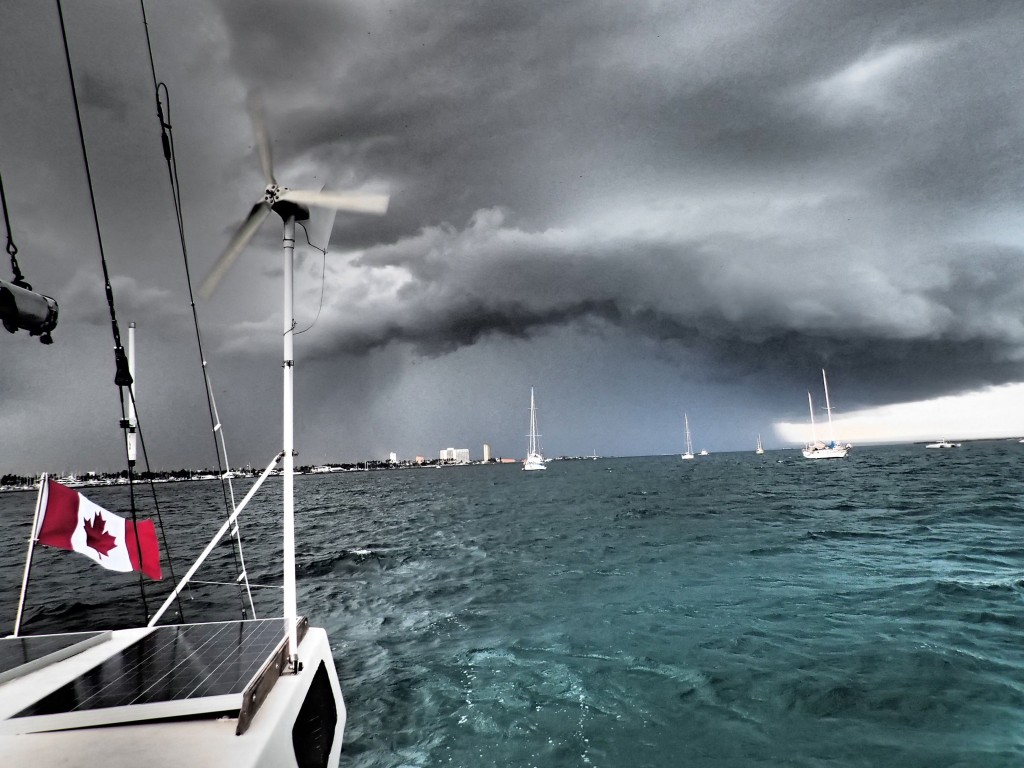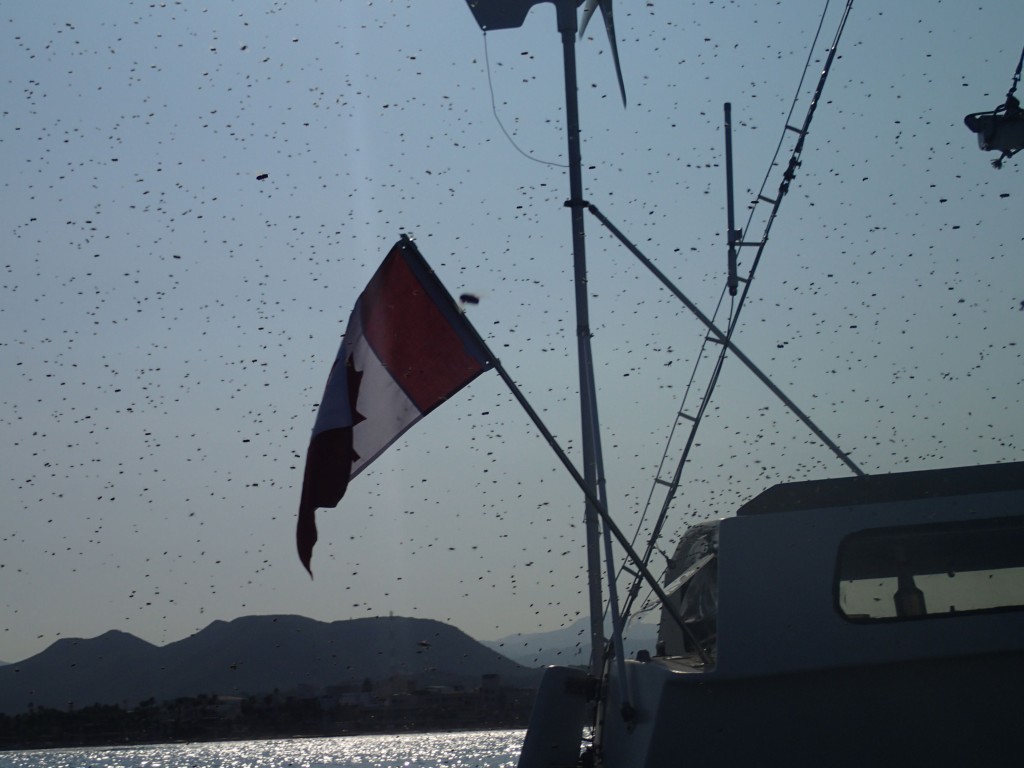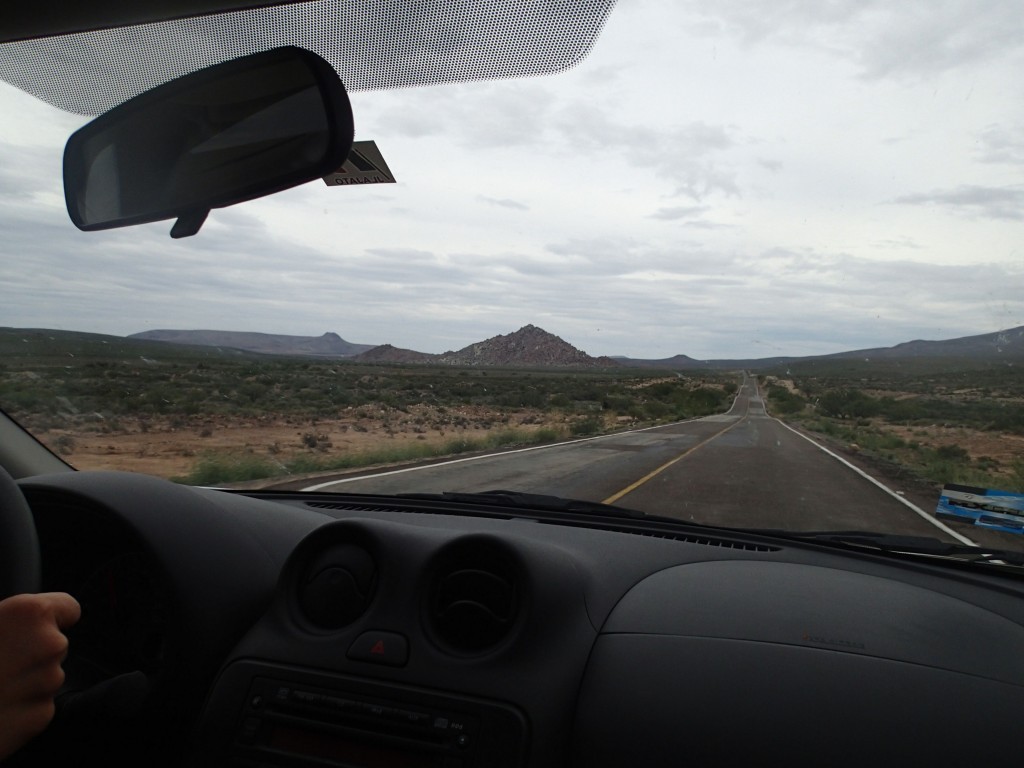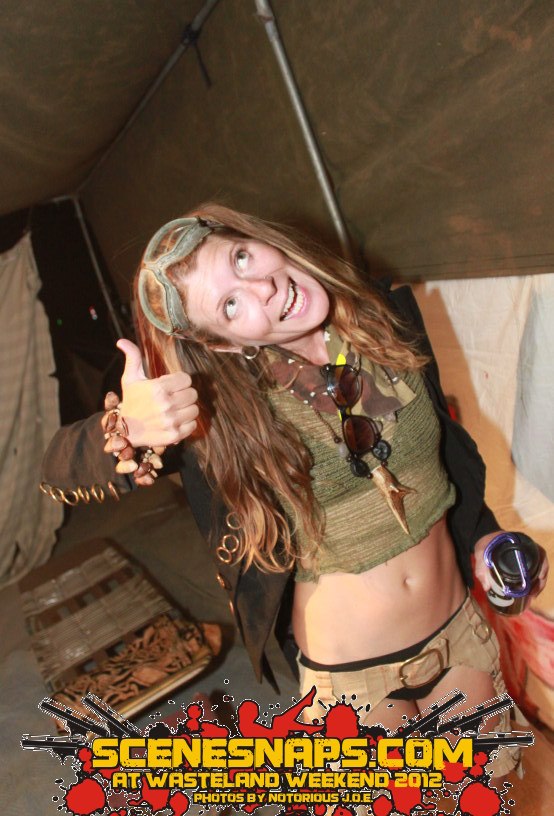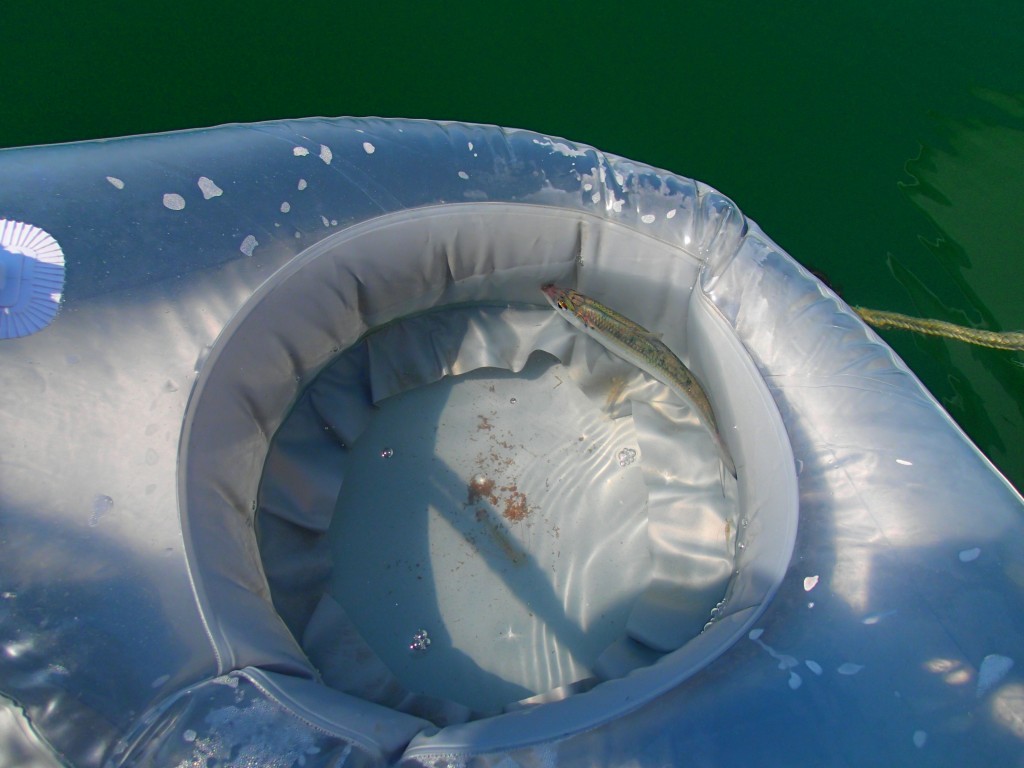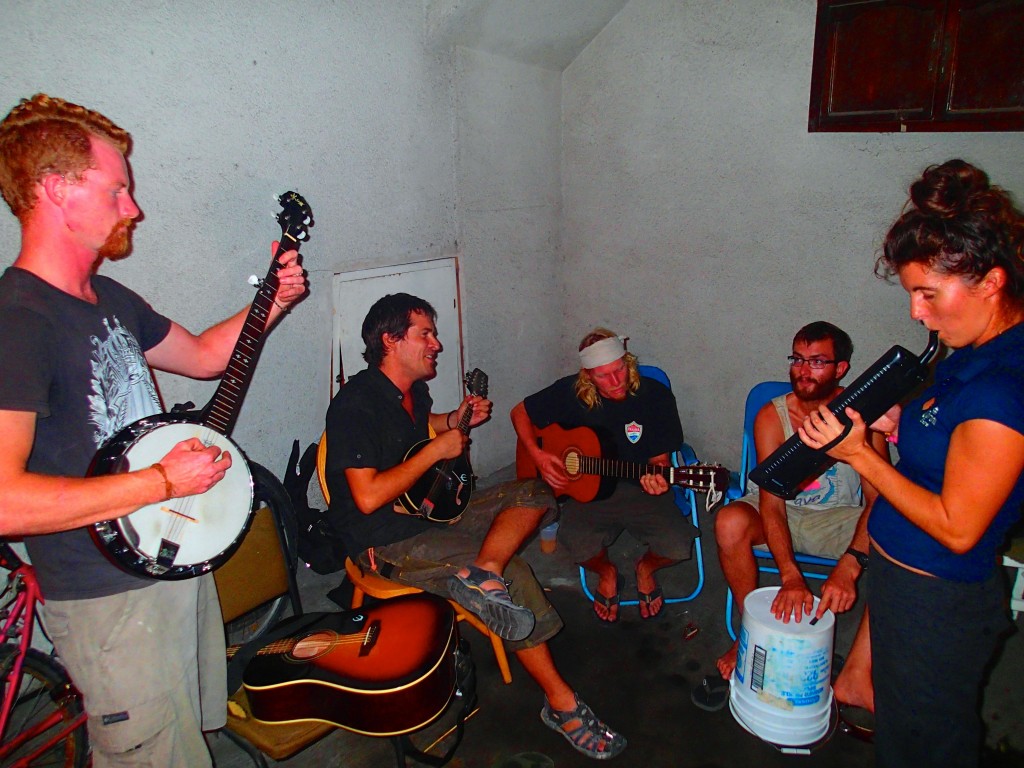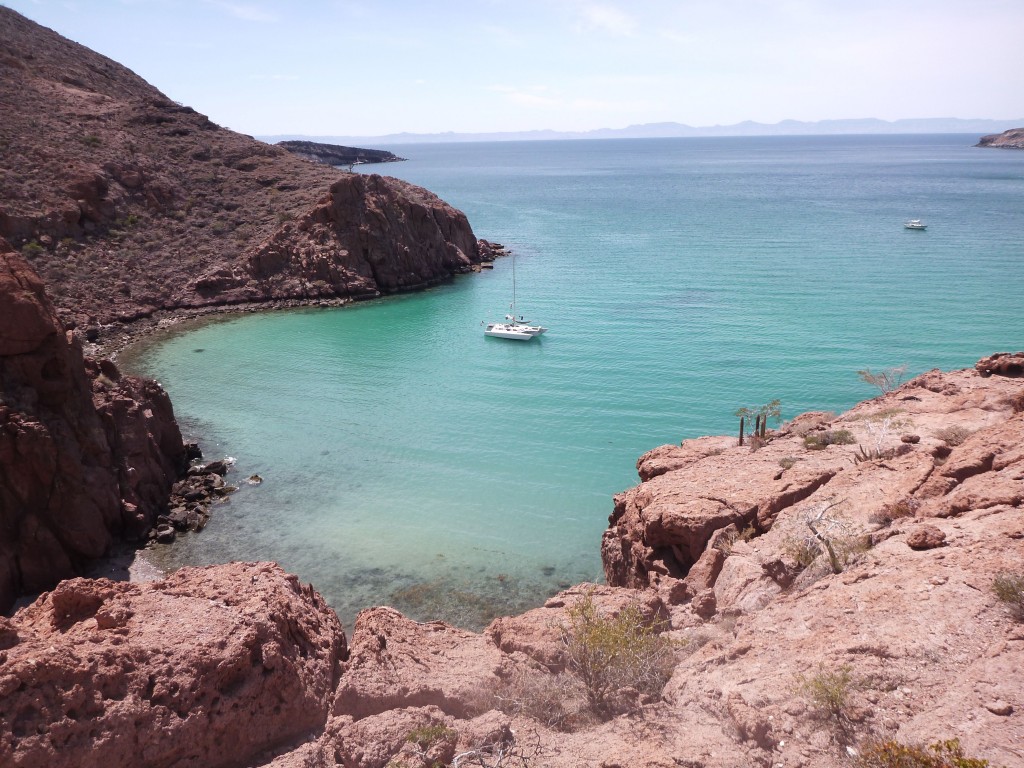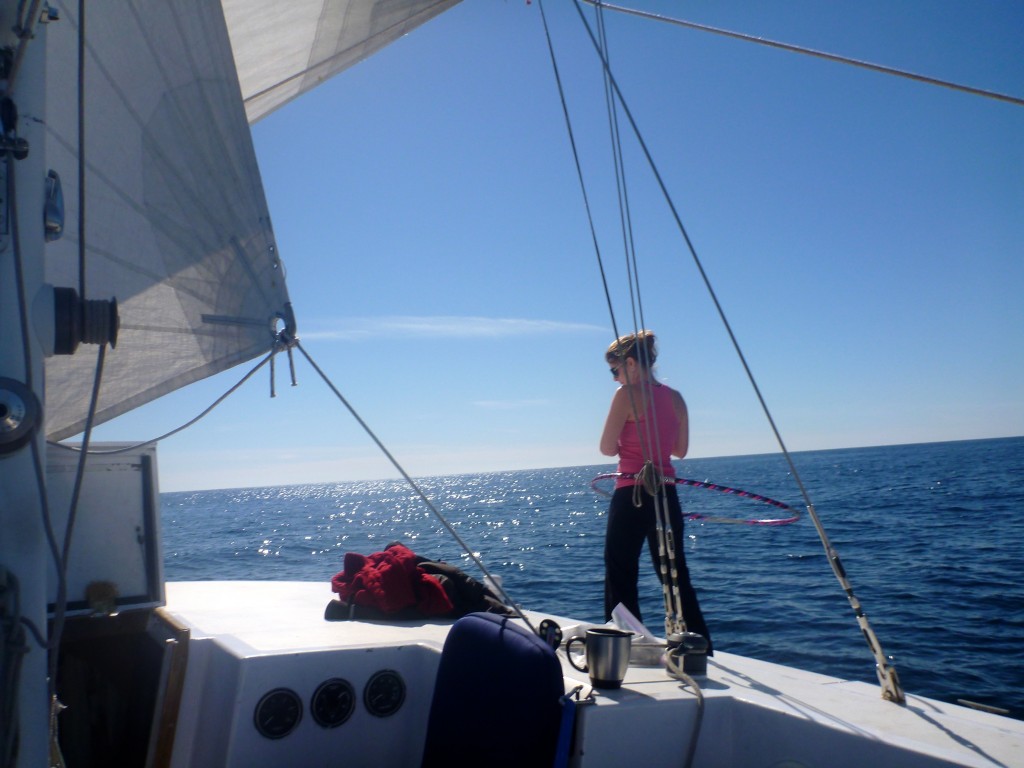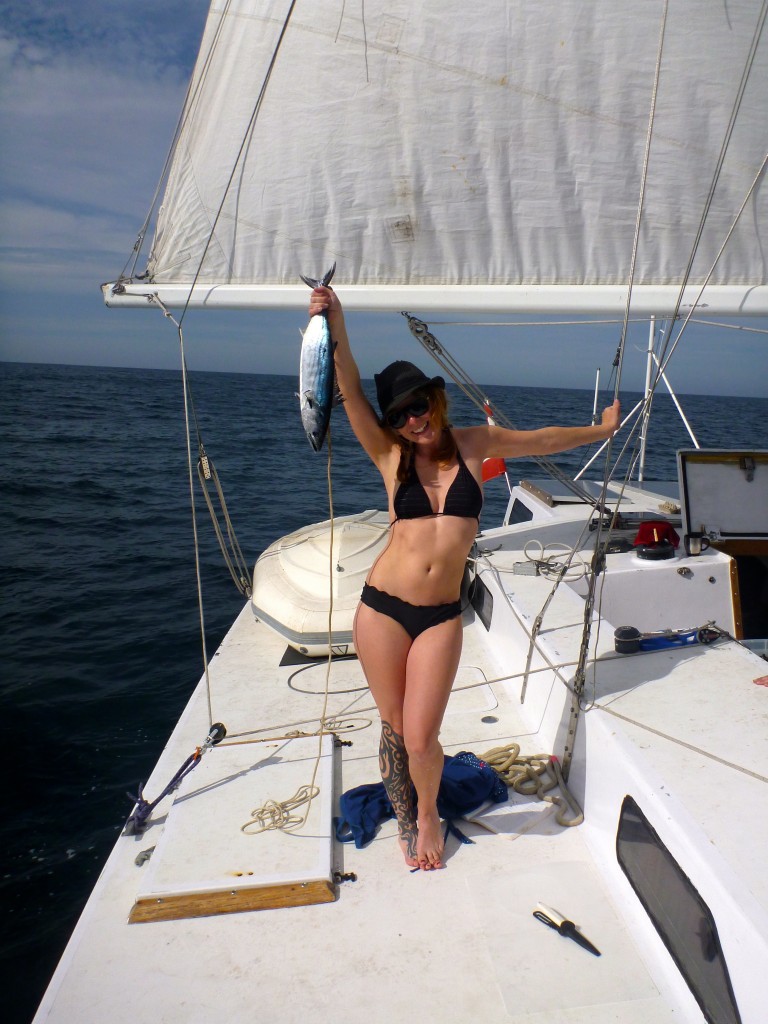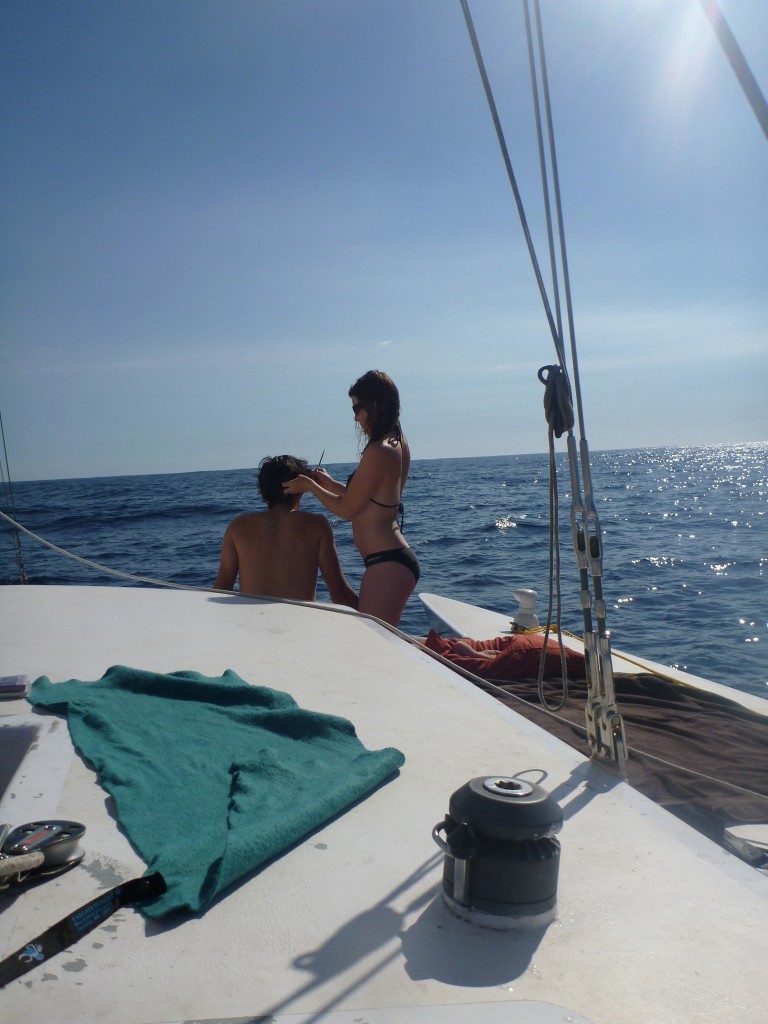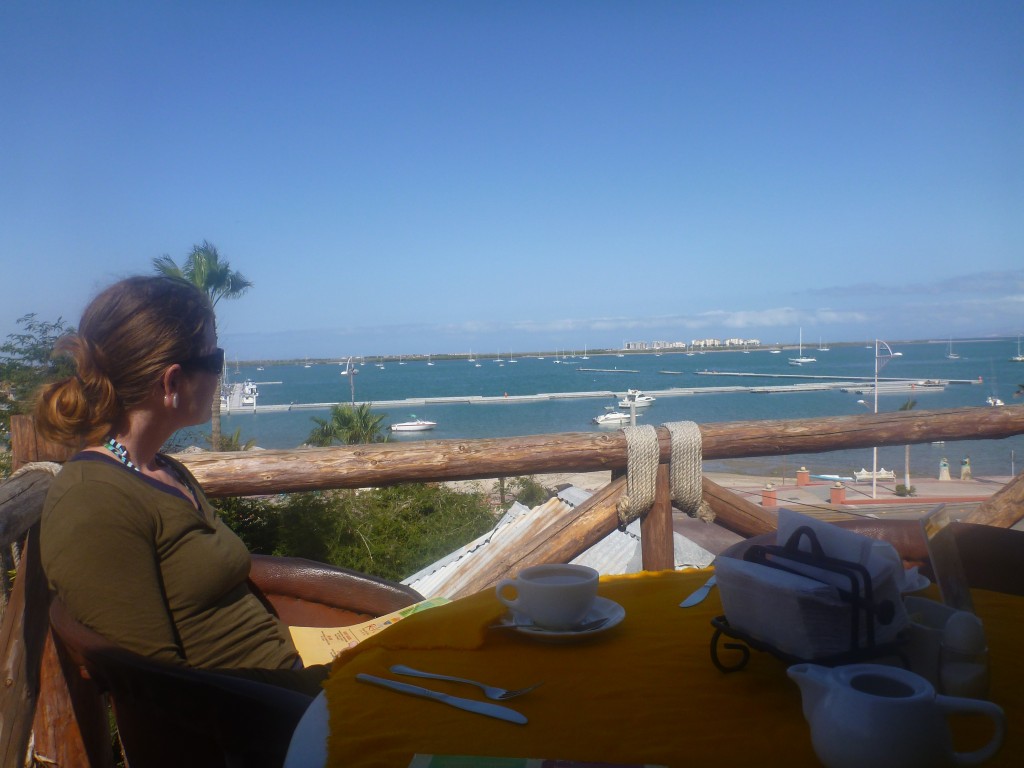
A few months ago, Miya and I adopted a scraggly little Mexican street kitten, named her Alice, and welcomed her into our home on the sea. A scant five weeks later, she became sick and ultimately died. We were devastated – it was incredible to us just how deeply she’d ingrained herself into our family and our hearts. This post is her memorial.
First though, the back-story – when we returned from our visits to Canada and the US, respectively, I found myself making the daily trek back and forth to the public library in the Teatro de la Ciudad (known on our boat as “the office”) about ten or twelve blocks from the docks. One day I stumbled across a large-ish cage by the side of the road, containing a mother cat, six or seven tiny newborn kittens, a bowl of dry cat food and a litterbox. The cage was slightly out of the sun, but it was filthy and the mother cat was obviously malnourished, and even in the 36ºC heat (96.8ºF) there was no water in the water dish. I walked away, wondering about the situation – there was a veterinarian’s office across the street, but it was clear that this cage full of kittens was not actively being taken care of.
I can only guess at the motivations there – Mexico takes a bit of a dim view on cats, as unlike dogs they do not offer any real work in exchange for food, and as such they’re looked at as a luxury, or at the other end of the spectrum, a pest. Even as I write this, I know that when I walk home from the library today I will pass the flattened, dried corpse of a run-over kitten directly in front of a nice, well-appointed home – it has been there for weeks, and nobody has bothered to pick it up.

So why was this cage full of kittens shuffled off across the road, out of the way? I can only assume that they were letting nature take its course, to avoid having to care for seven kittens that may or may not have ever found homes. I stopped at the first store I came across, purchased a large bottle of water and returned to the cage, cleaning and filling the water dish. The skinny, dirty mother cat was incredibly affectionate, purring loudly and rubbing against me before attacking the fresh water with a fervour.
For the next few weeks I stopped in every few days, bringing water when the cats had none and noting sadly that the number of kittens in the cage was slowly dropping. At one point there were two kittens down – one obviously dead, with flies starting to swarm, and one passed out in the litterbox obviously too weak to move. I tried to tell myself that I was doing what I could for these animals – the cage they were in was a prison, but it also provided protection against the many roaming street dogs in the neighborhood, who would happily make a meal of the little guys given half a chance. Each visit, I hoped to see the kitten count unchanged, but the numbers continued to dwindle.

At some point we left for our visit to Wasteland Weekend in San Diego, and I told myself that if there were any alive when we returned, I would do whatever I could to provide a good home for at least one of them. The first day back at the office, I walked over to the usual spot… but the cage was gone! I looked around and noticed that it had been moved across the street, in front of the vet’s office, and I went over to take a look. The cage had been cleaned up and the water and food dish was full, but there were only two kittens remaining – a grey-and-white one, and a black one. I made arrangements with the veterinarian to come and pick up the grey-and-white kitten the next day.
When I returned with Miya, hoping to surprise her with a new kitten, the grey-and-white kitten was gone, the vet had given it away to the very next customer. I was annoyed, but willing to take the last of the litter – but Miya was hesitant. We’d talked a lot about the folly of having pets aboard and agreed not to have pets until we live on land again someday, and so we left, kittenless. Over the next few hours, however, she gradually came around to the idea and the next day we went after work to pick up the new furry member of our family.
Alice immediately made herself at home, and offered her opinions on everything and anything. We had attempted to make the boat a kitten-proof environment, but we soon found out that there would be nothing safe from her explorations or critiques. Take for example this video, in which Alice discovers the Dia de los Muertos decorations and promptly destroys them:
The next few weeks flew past at an alarming rate – Alice accompanied us on a trip north into the Sea of Cortez, bouncing between anchorages and finally coming to rest for a week just shy of Puerto Escondido in a quiet bay called Bahia Candeleras. She seemed to really enjoy boat life, spending time running around the decks or going below to nap during the rough, rocky portions. We slowly trained ourselves to look carefully before jumping down the stairs into the cabins, as Alice asserted her ownership of the boat by sleeping wherever she damned well pleased… which often meant the middle of the floor in whatever room she occupied.

It became clear that we’d taken Alice from her mother a little too early – certainly she was able to eat solid food and run around the boat. Still, we began to notice some behaviours that marked her as something of a unique cat… for one, she had no problem communicating her discontent vocally. Alice would make very well known her needs, howling in her tiny kitten voice for more food, or more attention, or less food, or less attention, or her will to be picked up and moved to a higher location, or a lower location, or… well, anything. She was incredibly vocal, and we quickly learned to distinguish between her cries for food over her cries for attention or assistance climbing the steeper set of stairs.
Another unique feature of Alice was her immediate recognition of the humans on the boat as other sentient beings, by making regular eye contact. I took this behaviour at such a young age to be a sign of intelligence, but I was later corrected by my friend Tom, who said that constant eye contact was another sign of her having been taken too early from her mother. Apparently eye contact is a taboo in cat society, and Alice had just not learned that. “Proper” or not, we enjoyed her eye contact and vocal communications greatly.

The less-welcome habit began a few weeks after she arrived on the boat – suddenly, as though a lightswitch had been thrown, Alice decided that she needed to nurse on us. No body part was safe – we’d awaken in the night to find Alice suckling on our necks, or arms, or ankles. We were as firm as possible in trying to curb this behaviour – it wasn’t damaging or painful in any way but hey, creepy. Eventually Miya offered up her favourite ultra-soft blanket, and somehow Alice decided that this would be her new suckling target – the blanket went into a shoebox and Alice began sleeping in that shoebox almost exclusively. The suckling on our necks and arms stopped overnight.
The end came quietly and without warning. We had sailed to the Isla Espiritu Santo with our friends Tom and Dan, and there was an incident on a Thursday in which Alice discovered a wedge of ‘Laughing Cow’ spreadable cheese and absconded with it. She was chased down, and when we attempted to take the cheese from her, she flipped – she went completely feral, with gutteral growls and all four paws flailing like windmills with claws outstretched. Taking this tiny wolverine by the scruff of the neck, I dropped her in the kitchen sink and turned on the water – she was shocked, and immediately stopped fighting and dropped the cheese. Alice spent the next few hours cuddling up to us, as though trying to apologize for her horrible behaviour.

Days later, on the Saturday morning, she seemed somewhat lower-energy than usual. She wasn’t yowling, but she seemed mostly normal, if a little tired… we let her go back to bed and went about our day. When we returned at 4pm however, she was noticeably weak and shaky, not at all herself. When Miya realized that her food bowl was at the same level, she asked when I’d last fed Alice… I hadn’t fed her in two days, and neither had Miya, and so Alice hadn’t eaten in at least a day, possibly more. Kittens need to eat about every three hours, so this was a very bad sign!
We took her immediately to the vet from whom we’d adopted, and the vet told us that Alice had some kind of blockage. She gave the kitten a suppository and told us to feed her canned tuna juice and a special energy gel for animals recovering from surgery, and to call her the next day if Alice hadn’t gone to the bathroom yet. Unconvinced, we took Alice home. When we examined her litter box closely, we found traces of aluminum wrapper – could she have eaten a larger chunk of the foil cheese wrapper?
We watched her carefully, like fitful parents, trying to get her to eat tuna juice and the energy gel – but at around 10pm, Alice stood to walk to her litter box, made it a few steps and collapsed. We immediately got on the VHF radio and polled the fleet, looking for recommendations of a better veterinarian, someone who could help us in our emergency. A call came back; a strong recommendation of a young local veterinary surgeon with excellent english and modern education. We immediately called her, then jumped in a taxi.

The new vet was amazing, putting Alice immediately on an IV of saline and glucose and trying several procedures to assist with whatever was blocking her intestines. We stayed with her until after midnight, until the vet said there was nothing further to do but wait and see if the procedures would take effect. She offered to take Alice home with her for the night for observation, and let us know in the morning how things went.
We went home and slept fitfully, knowing that our kitten was in the best possible hands and wishing with all our might that she’d recover… but in the morning we were met with a the worst possible news. An email arrived at 9am, saying that Alice had had a terrible night, and that she was not expected to live through the morning. In the vet’s opinion, she was now too weak to survive surgery, and as such she recommended euthanasia. With extremely heavy hearts, we discussed it and ultimately agreed.
Alice was perfect in her imperfections, and she made her way instantly into the hearts of any who encountered her, either in person or through Miya’s and my regular Facebook blatherings. She was opinionated and audacious, and brave until the end. We were able to take her in from probable death on the streets of Mexico and give her everything a kitten could possibly hope for – but sadly, our time with her was cut far too short. In five short weeks Alice changed our lives for the better, and we miss her deeply.

